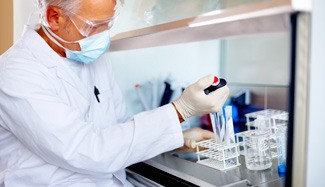Migraine Outcomes
Cell-Innovations has recently pioneered the work into the treatment of chronic migraines by the use of StroMed. Sufferers of chronic migraines typically have more than 15 migraines or tension-type headaches per month. A Cell-innovations case-study has shown the potency of this treatment on those people who are at the extreme end of the disease. Cell-Innovations is currently conducting a formal clinical trial into the application of StroMed into chronic migraines.
Of the 4 chronic migraine patients treated, 3 out of the 4 patients obtained long term relief from migraines for up to 12 – 18 months with a decrease of more than 95% of migraines and tension-type headaches during the study. It is still unknown how long the effects of the treatment will be for or whether further treatments will be required.
Below is a copy of the Abstract published and complete article. Cell-Innovations IP has provisional patented the use of SVF for migraines.
Migraine and tension-type headache treated with stromal vascular fraction: a case series. Journal of Medical Case Reports 2014, 8:237
Abstract
Introduction
Chronic migraines and tension-type headaches are debilitating diseases affecting 1.4 to 2.2% of the population with both quality of life and economic implications. To date, the pain associated with migraine and tension-type headaches has been controlled with a range of medications, with varying levels of success. In addition, the side-effect profile of these medications, as well as their potential for addiction, has been a cause for concern for both
patients and physicians.
Case presentations
Four women with long histories of migraine or frequent tension-type headache that meet the International Classification of Headache Disorders criteria for Chronic Migraine or Tension-type Headaches were given a systemic treatment(s) of autologous stromal vascular fraction or autologous ‘StroMed’ isolated from lipoaspirate. StroMed is stromal vascular fraction cells prepared by ultrasonic cavitation. Two of the four patients, both of whom are Arab women aged 40 and 36 years, ceased having migraines after 1 month, for a period of 12 to 18 months. The third patient, a Slavic woman aged 43 years, had a significant decrease in the frequency and severity of migraines with only seven migraines over 18 months. The fourth patient, an Asian woman aged 44 years, obtained a temporary decrease for a period of a month and was retreated 18 months later and has been free of migraines to date for 1 month. Pain medication was typically reduced from prescribed opioid analgesia to non-steroidal antiinflammatory drugs and paracetamol.
Conclusions
This case series is the first to provide evidence of the efficacy of autologous StroMed and stromal vascular fraction in the treatment of migraine and tension-type headache. The treatment of this disease by stromal vascular fraction adds a new dimension to its clinical applicability and suggests a relatively simple treatment that may help address the symptoms of the disease. Given what is known about the components of the stromal vascular fraction and how they act, the information presented in this case series may also further our knowledge of the etiology and pathophysiology of migraine and tension-type headaches. This treatment is simple, looks to be extremely effective and has been life changing.
Full Report
The full report is available at the Journal of Medical Case Reports 2014, 8:237 Migraine and tension-type headache treated with stromal vascular fraction: a case series.




